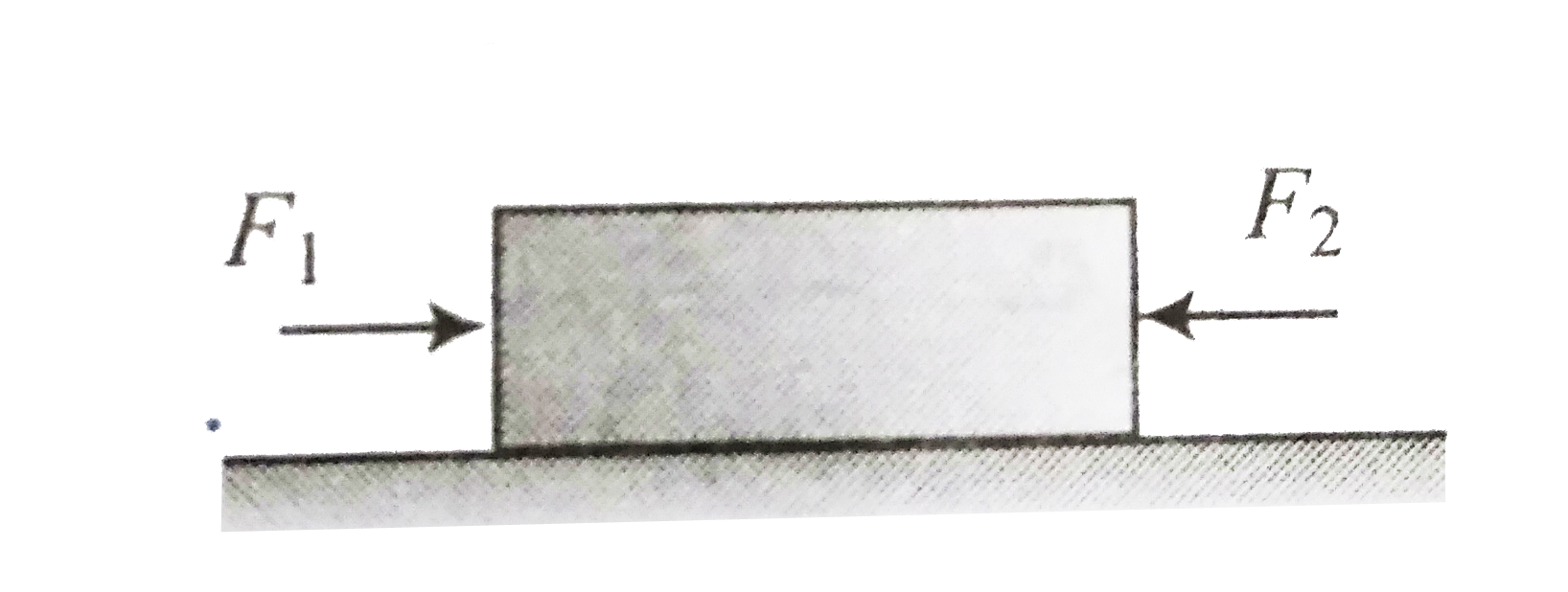A moving particle is acted upon by several forces F1,F2,F3….etc. One of the force is chosen sat F2 the which of the following statement about F2 will be true.
Work done by F2 will be negative if speed of the particle decreases
Work done by F2 will be positive if speed of the particle increases
Work done by F2 will be equal to the work done by other forces if speed of the particle does not change
If F2 is a conservative force, then work done by all other forces will be equal to change in potential energy due to force F2 when speed remains constant.
The correct Answer is:D
By work energy theorem
WF2+Wother=ΔK
⇒WF2=ΔK−Wother
So A & B are wrong
If speed do not change ΔK=0
then WF2=−Wother...(1)
So WF2≠Wother
If F2 is conservative force then
ΔU=−WF2=Wother(from(1)
Topper's Solved these Questions
- BOOK - RESONANCE ENGLISHCHAPTER - DAILY PRACTICE PROBLEMEXERCISE - DPP No.309videos
DAILY PRACTICE PROBLEM
- BOOK - RESONANCE ENGLISHCHAPTER - DAILY PRACTICE PROBLEMEXERCISE - DPP No.3120videos
DAILY PRACTICE PROBLEM
- BOOK - RESONANCE ENGLISHCHAPTER - DAILY PRACTICE PROBLEMEXERCISE - DPP No.289videos
DAILY PRACTICE PROBLEM
- BOOK - RESONANCE ENGLISHCHAPTER - CURRENT ELECTRICITYEXERCISE - High Level Problems (HIP)19videos
CURRENT ELECTRICITY
- BOOK - RESONANCE ENGLISHCHAPTER - ELECTRO MAGNETIC WAVESEXERCISE - Exercise 327videos
ELECTRO MAGNETIC WAVES
Similar Questions
A particle of mass m is acted upon by a force F=t2−kx . Initially , the particle is at rest at the origin. Then
View SolutionFigure shown a wooden block at rest in equilibrium on a rought horizontal plane being acted upon by force F1=10N,F2=2N, as shown .IFF1 is removed , the resulting force acting on the block will be
 View Solution
View SolutionA homogeneous rod of length L is acted upon by two forces F1andF2 applied to its ends and directed opposite to each other. With what force F will the rod be stretched at the cross section at a distance l from the end where F1 is applied?
View SolutionA uniform rod of mass m and length is acted upon by the forces F1 and F2 Find that:
a. linear-and angular acceleration of the rod.
b. value of x for which the point P does not accelerate.
 View Solution
View SolutionLet f(x) be linear functions with the properties that f(1)≤f(2),f(3)≥f(4) and f(5)=5. Which one of the following statements is true?
View SolutionA moving perticle of mass m is acted upon by five forces →F1,→F2,→F3,→F4 and →F5. Forces →F2 and →F3 are conservative and their potential energy funcations are U and W respectively. Speed of the particle changes from Va to Vb when it moves from position a to b. Choose the correct option :
View SolutionDescribe the motion of a particle acted upon by a force
(i) F=−2(x−2)3
(ii) F=−2(x−2)2
(iii) F=−2(x−2)View SolutionA body placed in free space, is simultaneously acted upon by three forces −→F1,−→F2 and −→F3. The body is in equilibrium and the forces −→F1 and −→F2 are known ot be 36 N due north and 27 N due east respectively. Which of the following best describes the force −→F3?
View SolutionA particle of mass m initially at rest is acted upon by a unidirectional force F=F∘cos(π2t). The distance travelled by the particle when it stops first in the subsequent motion is ,
View SolutionA rod of length L and mass M is acted on by two unequal force F1andF2(<F1) as shown in the following figure.

The tension in the rod at a distance y from the end a is given byView Solution

